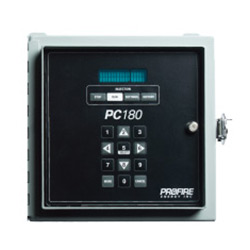- Albanian
- Arabic
- Belarusian
- Bengali
- Czech
- English
- French
- German
- Hebrew
- Hungarian
- Indonesian
- irish
- Italian
- Japanese
- kazakh
- Persian
- Russian
- Thai
- Uzbek
- Vietnamese
Innovative 3D Printed Roller Coaster Designs Revolutionizing Amusement Park Attractions
The Future of Fun 3D Printed Roller Coasters
In the realm of amusement parks, roller coasters have long stood as the pinnacle of thrill-seeking experiences. As technology advances, the creation of these colossal structures has evolved, and one cutting-edge method that stands out is 3D printing. With its potential to revolutionize the design, construction, and customization of roller coasters, 3D printing may very well shape the future of amusement rides.
What Is 3D Printing?
3D printing, or additive manufacturing, is the process of creating three-dimensional objects layer by layer from a digital file. This technique allows for complex geometries and custom designs that traditional manufacturing methods may struggle to achieve. In recent years, 3D printing has made strides in various industries, including automotive, aerospace, and healthcare, but its application in amusement park design is only just beginning to be explored.
Benefits of 3D Printed Roller Coasters
One of the primary advantages of using 3D printing in roller coaster construction is the potential for design innovation. Engineers can create intricate and novel track designs that enhance the rider's experience. With traditional methods, creating unique curves and features can be time-consuming and costly; however, 3D printing enables rapid prototyping and iteration, allowing designers to experiment with unusual shapes and elements, such as vertical drops, twists, and turns that would be difficult or impossible to achieve using conventional techniques.
Moreover, 3D printing can significantly reduce costs and time frames for building roller coasters. Since 3D printers can produce components directly from digital models, the need for mold creation and the associated labor involved is minimized. This efficiency not only accelerates the construction timeline but also lowers the costs associated with traditional manufacturing processes. Consequently, amusement park operators can provide guests with fresh and exciting attractions more frequently.
Customization and Personalization
Another fascinating aspect of 3D printed roller coasters is the ability to customize experiences for individual parks or even specific riders. Imagine a roller coaster that adapts its design based on user feedback or even on-the-fly adjustments during operation! With 3D printing, designers can easily incorporate elements that reflect the park's branding or regional themes, making each ride unique to its location.
3d printed roller coaster

Furthermore, personalized experiences could lead to the incorporation of augmented reality (AR) or virtual reality (VR) technologies. By utilizing sensors and interactive elements, roller coasters could be customized in real-time to enhance the rider's experience, or even guide the coaster to provide tailored thrills based on different rider preferences. This intersection of 3D printing with cutting-edge digital technologies holds immense potential for the future of amusement parks.
Sustainability Through 3D Printing
Sustainability is a growing concern in today's world, and the integration of 3D printing in roller coaster construction could contribute to more eco-friendly amusement parks. Traditional manufacturing often leads to waste, as excess materials are commonly discarded. However, 3D printing is highly efficient, using only the necessary materials to create components. This process reduces waste and energy consumption, ultimately leading to a smaller carbon footprint for new amusement rides.
Moreover, as advancements in materials science continue, the development of sustainable printing materials—such as biodegradable plastics or recycled composites—could further enhance the environmental benefits of 3D printed roller coasters. With consumers increasingly valuing ecological responsibility, parks that adopt these practices may attract a broader audience.
Challenges and Considerations
While the prospects of 3D printed roller coasters are thrilling, there are still challenges to overcome. Safety remains paramount in amusement ride design. Engineers must ensure that 3D printed materials meet rigorous safety and durability standards, as traditional materials like steel and wood have decades of performance data backing their use. Ongoing research and collaboration between engineers, designers, and material scientists will be essential to address these concerns.
Conclusion
As the frontier between technology and thrill rides continues to blur, 3D printed roller coasters represent a thrilling new chapter in the world of amusement parks. With the ability to innovate designs, reduce costs, promote customization, and enhance sustainability, these groundbreaking rides are poised to capture the imaginations of thrill-seekers for years to come. The future of fun is undoubtedly evolving, and 3D printing is leading the charge, bringing joy and excitement to amusement parks around the globe.
-
Flume Ride-Hebei Zhipao Amusement Equipment Manufacturing Co., Ltd.|Thrilling Water Attraction&Customizable DesignJul.30,2025
-
Flume Ride - Hebei Zhipao Amusement Equipment | Water Coaster, Thrilling DescentJul.30,2025
-
Flume Ride - Hebei Zhipao | Thrilling Water AttractionJul.30,2025
-
Flume Ride: Thrilling Water Attraction by Hebei Zhipao|Log Flume Manufacturers&Flume Ride DesignJul.30,2025
-
Flume Ride-Hebei Zhipao Amusement Equipment Manufacturing Co., Ltd.|Thrilling Water Coaster, Safe DesignJul.30,2025
-
Flume Ride-Hebei Zhipao Amusement Equipment Manufacturing Co., Ltd.|Thrilling Water Attraction, Safe DesignJul.30,2025
